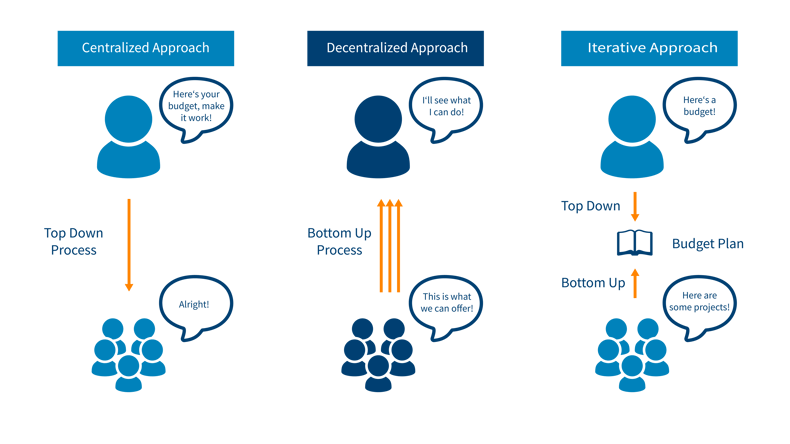The different ways of allocating your IT budget
Nobody would deny the importance of proper budgeting; however, it is debatable what “proper” means in this case. There are different ways to allocate the IT budget and there sadly is no one-size-fits-all solution.
Budgeting decisions and project planning can differ widely from business to business. There are various reasons for that and no method is necessarily better by default. However, in general one can differentiate between three main approaches regarding IT budget allocation. Today we will have a look at each and assess their advantages and disadvantages:
The centralized approach
In this approach, the company has one centralized pot of money available for IT needs, demands, and projects. These funds are then allocated from the top down across the different departments until the IT budget is used up. The key advantage here is that it is quite easy to monitor and administer project costs and IT resources. After all, budgeting is generally considered – more or less – from one place. However, in the worst case the company’s growth can be severely hindered, because there usually are no leftover funds for promising projects.
The decentralized approach
Here things are tackled from the other direction: the departments pitch their IT demands as well as projects and other expenses they deem important or potentially useful in a bottom-up process. Afterwards, the IT budget owner decides on a case-by-case basis, where the budget should be allocated. This approach enables the company to promote IT needs that could increase value generation instead of mindlessly allocating the IT budget based on a flat fee approach. However, the flipside of this coin is that an assessment of future budget needs is aggravated given that needs and demands can be so varied each budgeting cycle. Furthermore, those budget demands often tend to exceed the available resources.
The iterative approach
This strategy tries to find a middle ground between the top-down and the bottom-up approaches above. First, an IT budget is determined akin to the centralized approach. Afterwards, this budget is allocated on a case-by-case basis, similar to the decentralized approach. Once the initial budget is depleted, stakeholders assess the remaining demands and projects that have some urgency or show promise for value generation. Finally, the total budget needed is adjusted according to these assessments for the next budgeting cycle. Through iteration (hence the name) this ideally leads to more and more optimized budget plans over time. On surface level, this seems to be the best approach out of the three. However, it is apparent that this strategy requires significantly more resources and effort when it comes to planning and execution. Furthermore, the company needs sourcing options to scale their resources properly, which is not necessarily conceivable for many companies.

As was said in the beginning, there is no one-size-fits-all solution. Which approach is the best for your company depends on the resources available. If your organization has to keep a strict budget in order to realize their business plans, taking the centralized approach might be a good bet. If your budget allows for more flexibility, experimentation, and risk-taking, going the decentralized route could work out great for you. Finally, if your company does have considerable resources, the iterative approach might allow for huge promising transformations in the long term. Key is a holistic analysis of needs, demands, and resources, as well as goal-oriented, company-wide communication.
If you want further inputs on how to improve your IT budgeting, feel free to have a look at our free fact sheet "5 Tips for Optimizing Your IT Budget Planning." A brief, condensed look at some of the challenges of and approaches to the processes that plague every budgeting cycle.
|


